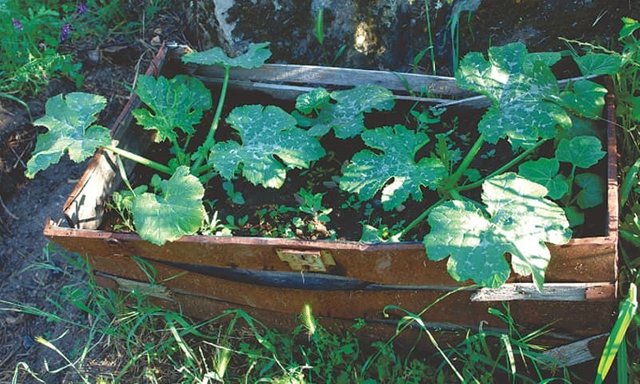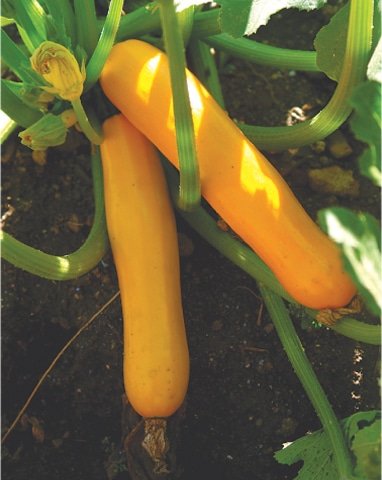Gardening: FORWARD THINKING WITH LASAGNA GARDENING

Heat waves that shimmer reality towards nightmares, water shortages and power cuts likewise turn life - and gardening- into a massive endurance test that is increasingly difficult to tolerate.
In such dire circumstances, anything that makes life easier is to be welcomed with open arms, therefore, whilst there is no immediate solution to the rapidly increasing climate change and associated problems this brings or to a paucity of water, the fact that there is water and labour-saving method of gardening, is wonderful news indeed.
No, this is not a sales herb for fancy, ultra-expensive, computerized or other gadget assisted irrigation technique but a ealistic, much-needed, step backwards in time to a lesson that should have been well-learnt from history.
It has new names now, names intended to make it sound like a brand new, therefore 'modern', discovery but the truth is that 'Sunken garden beds','Lasagna gardening', call it what you will or what the latest crop of gardening gurus decide, it came into being hundreds and hundreds of years ago, possibly in ancient Syria first,before being popularised by the Moghuls.
Quite simply, this incredibly simple, ultra sensible,water-saving gardening method which should have never fallen out of fashion let alone by the wayside, consists of cultivating vegetables, flowers,herbs, even shrubs and trees in self-shaded , water retentive, below actual soil level, meticulously created beds, which, by the way, feed themselves ,organically, too.
making such a bed isn't at all difficult and costs very little-if anything at all.
SETTING THINGS UP:
- It is best to make a series of reasonably-sized beds rather than one large, unmanageable one:anything from approximately 2 meters x one meter up to four meters x two meters being ideal.
- After making out the perimeter of the bed,remove the top three inches of 'top soil', weeding as you go, and set aside.Excavate a further 12 inches or so of what is called 'sub-soil'- this contains very little plant nutrition - and use this sub-soil to raise the ground level, equally, all around the excavated hole, to the width of an acceptable footpath, firmly tamping it down as you go so that it remains in place then, when this is done to your satisfaction, cover it with lengths of strong cardboard - recycled cardboard boxes are perfect for this - to form a weed proof, raised footpath around the under-construction bed.
NEXT:
- Spread a layer of wet newspapers into the base of the hole, laying them up to an inch or so thick.On top of the newspaper layer, spread a one- to two-inch deep layer of old, well-rotted, preferably organic animal/chicken manure, and give it a good watering to settle it into place.
- Then add the next-layer of 'lasagna' using, this time, something nitrogen rich and green such as lawn-clippings, weeds (as long as they have no seeds attached) fruit/vegetable peels, coffee grounds/tea leaves, etc.Water it down once more and continue doing so between each brown (carbon) and green (nitrogen) layer until the 'lasagna' is almost level with the original surrounding ground area.
- The 'lasagna topping' is then kept aside, original top soil mixed 50/50 with either well-rotted manure or organic post or 50% top soil, 25% manure and 25% compost.Top off the 'lasagna' with this' mounding it up if necessary and then watering it down.

WATERING:
- Leave, undisturbed for a week or so then water it, leave for a second week when, all going well, you will clearly see that the 'lasagna' is sinking down.Water it again, allow it a third week, by which time, as the ingredients are decomposing, it should have sunk some more which is when you can get to grips with planting it.If putting in plants/plug plants/shrubs or trees, plant them int he normal way , digging down through the 'lasagna layers' and thoroughly water in as per usual and continue irrigating regularly until the transplants are settled in place.
This is when the natural composition of the sunken bed will take over.Not only will this sunken bed retain moisture, it will also generate moisture as the layers rot down.
Try this out and tell me how it went!!!
Best of luck!
Congratulations @khadija14! You received a personal award!
Click here to view your Board
Do not miss the last post from @steemitboard:
Vote for @Steemitboard as a witness and get one more award and increased upvotes!
Congratulations @khadija14! You received a personal award!
You can view your badges on your Steem Board and compare to others on the Steem Ranking
Do not miss the last post from @steemitboard:
Vote for @Steemitboard as a witness to get one more award and increased upvotes!